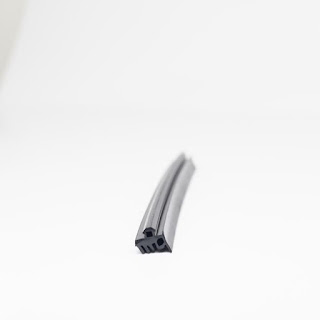Garage Doors Seals
Garage door seals, also known as garage door weather stripping or garage door bottom seals, are essential components used to seal gaps and prevent the intrusion of weather, debris, pests, and moisture into a garage space. These seals are designed to enhance the energy efficiency, security, and overall functionality of garage doors. Below, we explore the features, types, functions, and significance of garage door seals:
**Features and Composition:**
1. **Material:** Garage door seals are typically made from various materials, including rubber, vinyl, neoprene, or other elastomers. The choice of material depends on factors such as climate, durability requirements, and the specific application.
2. **Design:** Garage door seals come in different designs, but the most common types include bottom seals, threshold seals, and perimeter seals. Each design serves a specific sealing function.
3. **Attachment Methods:** These seals are often designed for easy installation, either by adhesive backing, screws, or other fastening methods. The attachment method depends on the seal type and the garage door construction.
**Types of Garage Door Seals:**
1. **Bottom Seals:** These seals are affixed to the bottom edge of the garage door and create a barrier between the door and the garage floor. They are designed to seal the gap between the door and the floor when the door is in the closed position. Bottom seals can be made of rubber or vinyl and are effective at preventing drafts, water, and pests from entering the garage.
2. **Threshold Seals:** Threshold seals are installed directly on the garage floor, creating a raised barrier that the garage door closes against. They provide a robust seal against water, leaves, and debris. Threshold seals are especially useful in cases where the garage floor is not perfectly level.
3. **Perimeter Seals:** Perimeter seals are installed around the sides and top of the garage door frame. They provide an airtight and weatherproof seal around the entire garage door. These seals are often used in conjunction with bottom seals for comprehensive sealing.
**Functions and Significance:**
Garage door seals offer several essential functions and benefits:
1. **Weatherproofing:** The primary function of garage door seals is to protect the interior of the garage from adverse weather conditions. They prevent rain, snow, and wind from infiltrating the garage, keeping it dry and free from water damage.
2. **Energy Efficiency:** By sealing gaps and preventing drafts, garage door seals contribute to improved energy efficiency. They help maintain stable temperatures inside the garage, which is especially important if the garage is insulated or serves as a workspace.
3. **Protection from Debris:** Garage door seals block leaves, dust, and other debris from entering the garage, reducing the need for frequent cleaning and maintenance.
4. **Pest Control:** Seals also act as a barrier against pests such as insects, rodents, and small animals, helping to keep the garage pest-free.
5. **Noise Reduction:** Garage door seals can reduce noise from outside sources, such as traffic or neighbors, making the garage a quieter and more comfortable space.
6. **Security:** By sealing gaps around the garage door, these seals enhance security by making it more difficult for unauthorized individuals to pry or tamper with the door.
7. **Durability:** Quality garage door seals are designed to withstand exposure to sunlight, temperature variations, and mechanical wear, ensuring long-term performance.
In summary, garage door seals are essential components that contribute to the overall functionality, energy efficiency, and protection of your garage space. Properly installed seals provide peace of mind, keeping your garage dry, clean, and secure while reducing energy consumption and increasing comfort. Whether for residential or commercial applications, garage door seals play a vital role in maintaining the integrity of the garage environment.


Yorumlar
Yorum Gönder